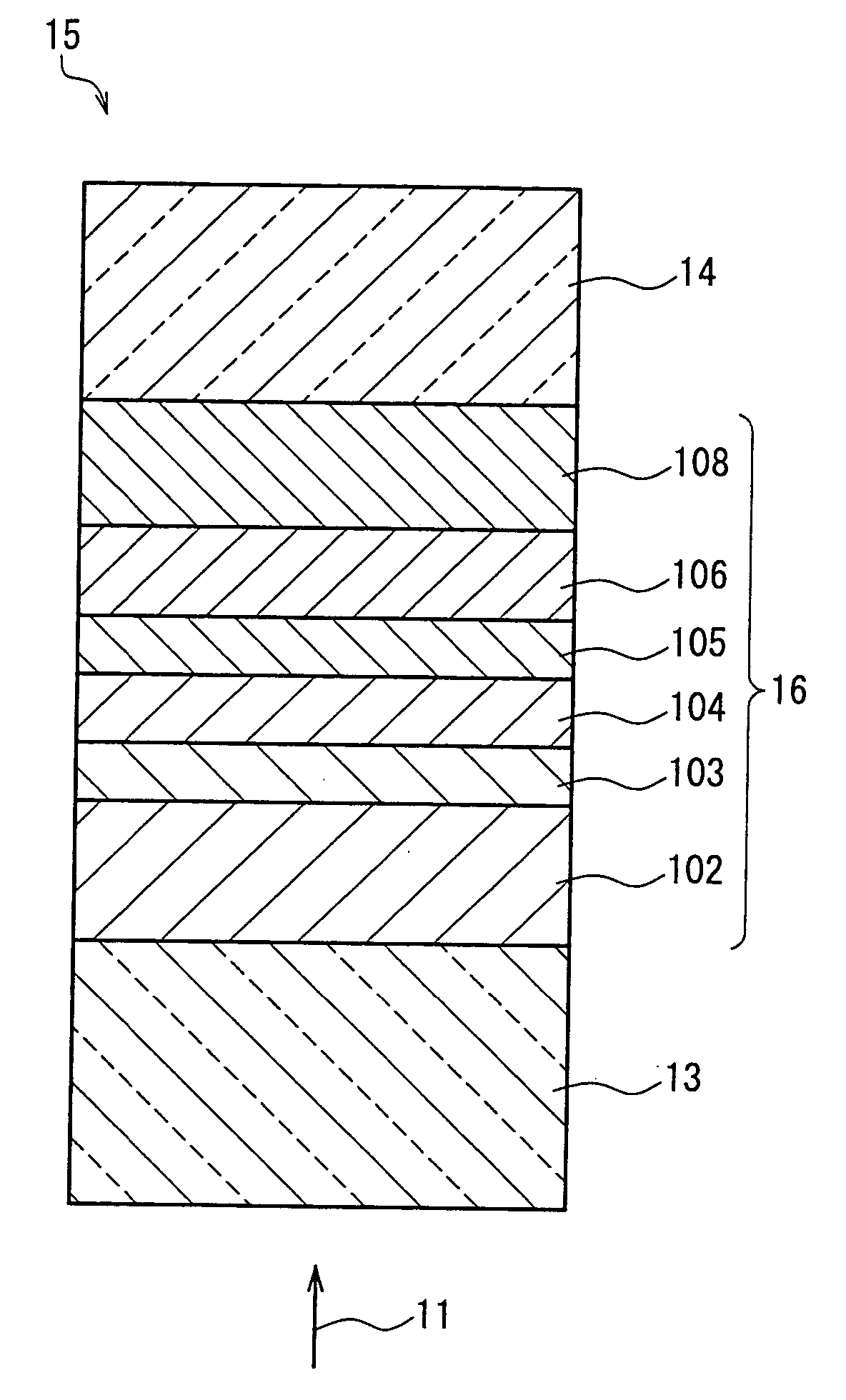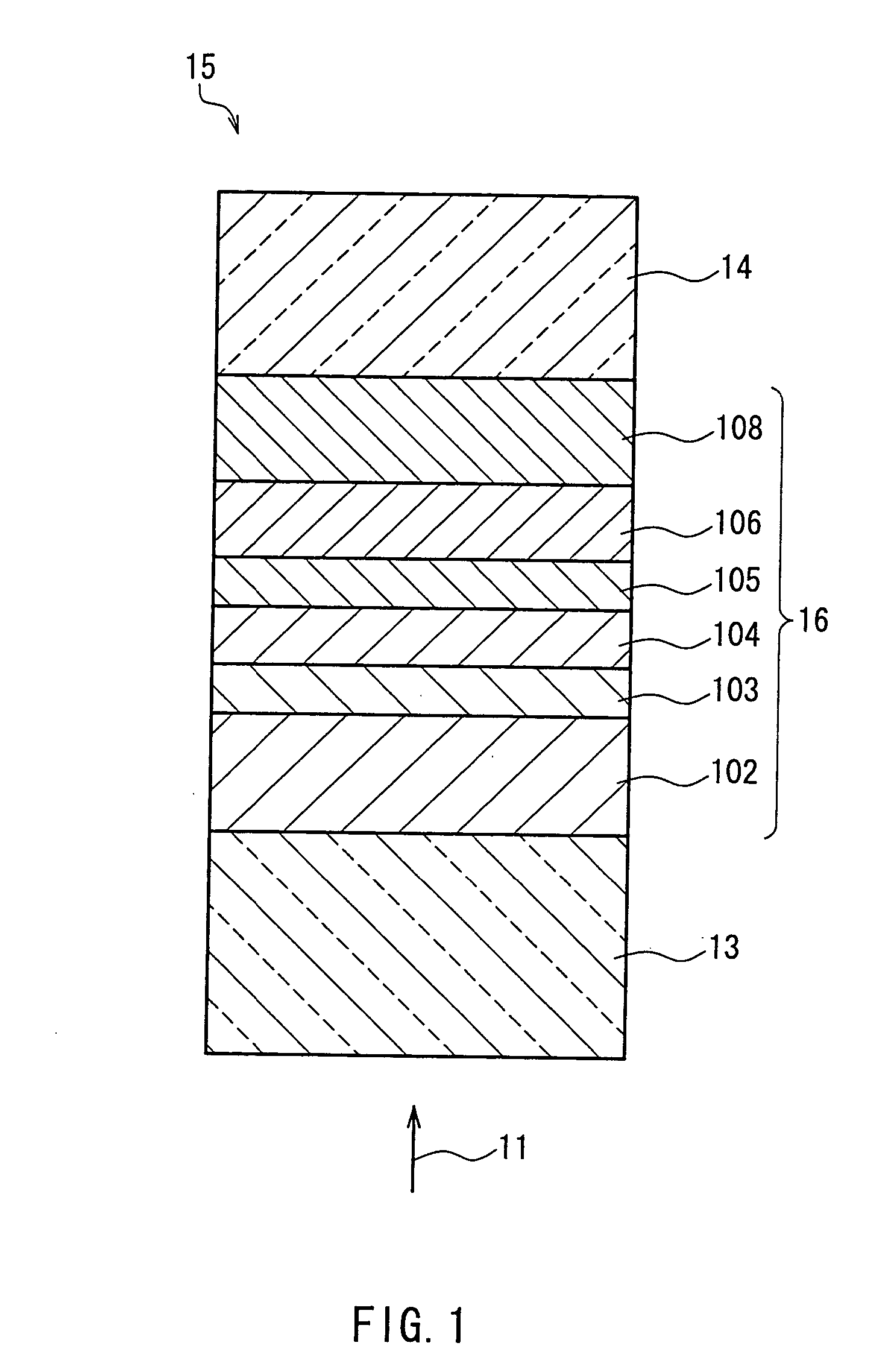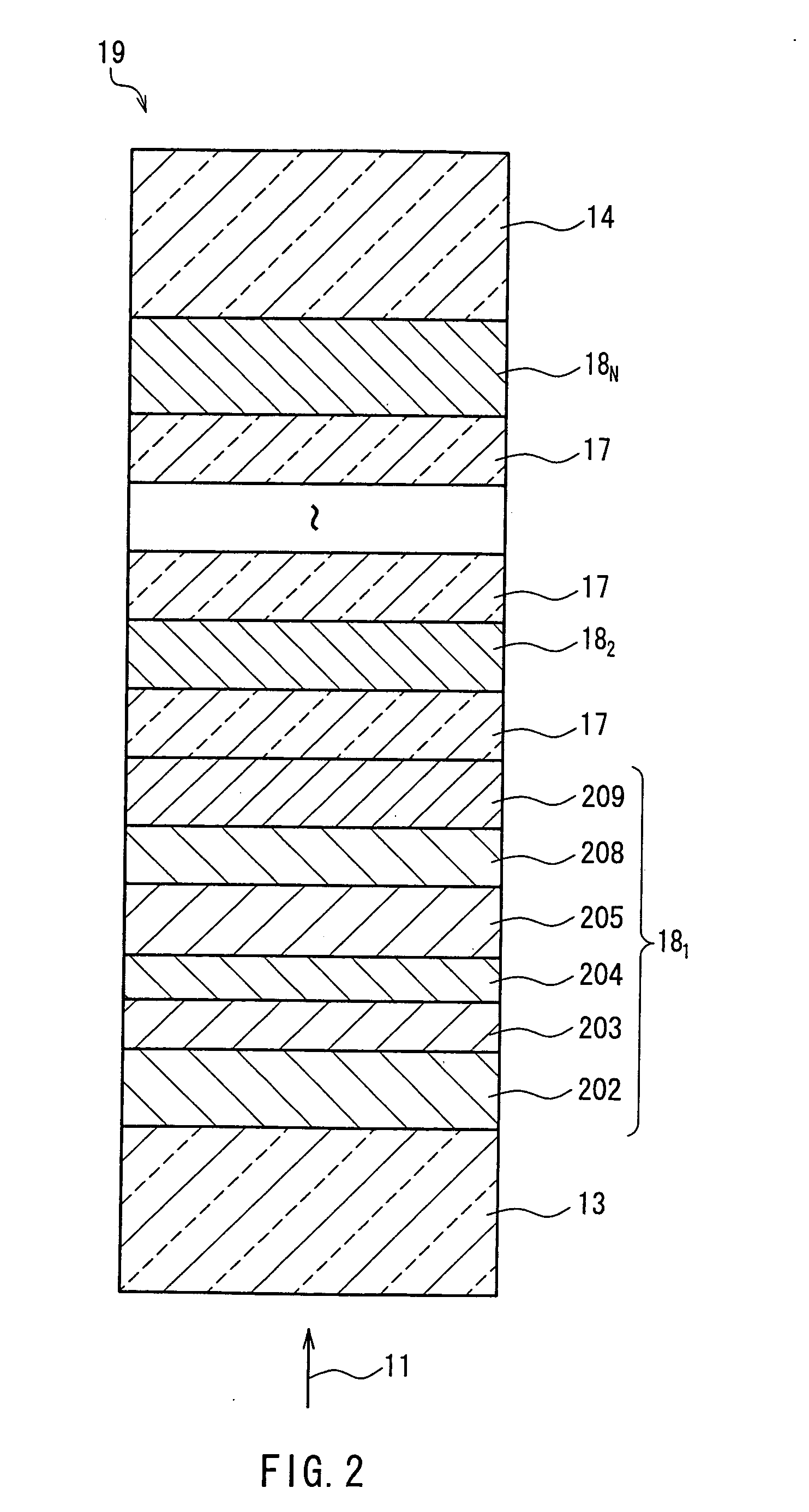Information recording medium and medium for manufacturing the same
a technology of information recording medium and information recording medium, which is applied in the direction of optical recording/reproducing/erasing methods, instruments, extracellular fluid disorder, etc., can solve the problems of difficult formation of crystalline phase, decreased crystallization speed, repeated rewriting properties deterioration, etc., to reduce recording sensitivity, repeat rewriting properties and signal intensity, the effect of increasing the crystallization speed of the recording layer
- Summary
- Abstract
- Description
- Claims
- Application Information
AI Technical Summary
Benefits of technology
Problems solved by technology
Method used
Image
Examples
embodiment 1
In Embodiment 1, an example of an information recording medium according to the present invention is explained. FIG. 1 shows a partial cross-sectional view of an information recording medium 15 according to Embodiment 1. The information recording medium 15 is an optical information recording medium on which information can be recorded and / or reproduced by irradiating a laser beam 11.
The information recording medium 15 is provided with an information layer 16 on a substrate 14, and furthermore with a transparent layer 13 on the information layer 16. In this information recording medium 15, the laser beam 11 is irradiated from the side of the transparent layer 13. The information layer 16 is made from a first dielectric layer 102, a first interface layer 103, a recording film 104, a second interface layer 105, a second dielectric layer 106 and a reflective layer 108, layered in this order from the side from which the laser beam is incident.
The transparent layer 13 is made from a ...
embodiment 2
In Embodiment 2, an example of an information recording medium according to the present invention is explained. FIG. 2 shows a partial cross-sectional view of an information recording medium 19 according to Embodiment 2. The information recording medium 19 is an optical information recording medium with a multi-layer structure (referred to as “multi-layer optical information recording medium” in the following), which includes a plurality of information layers, and which can record and reproduce information on these information layers by irradiating a laser beam 11 from one side.
The information recording medium 19 is provided with a substrate 14 and, formed thereon, N (N being an integer satisfying N≧2) information layers (N-th information layer 18N, . . . , second information layer 182, first information layer 181) that are layered with optical separation layers 17 formed between them, and a transparent layer 13 formed on the first information layer 181. It should be noted that i...
embodiment 3
In Embodiment 3, an example of an information recording medium is explained, in which the multi-layer optical information recording medium in Embodiment 2 is provided with two information layers, that is, N=2. FIG. 3 shows a partial cross-sectional view of an information recording medium 20 according to Embodiment 3. The information recording medium 20 is a two-layer optical information recording medium in which information can be recorded or reproduced on the information layers by irradiating a laser beam 11 from one side.
The information recording medium 20 is made of a substrate 14, and a second information layer 22, an optical separation layer 17, a first information layer 21 and a transparent layer 13 layered in this order on the substrate 14. For the substrate 14, the optical separation layer 17 and the transparent layer 13, it is possible to use the same materials as explained for Embodiments 1 and 2. Also their shape and function are the same as the shape and function desc...
PUM
| Property | Measurement | Unit |
|---|---|---|
| electric energy | aaaaa | aaaaa |
| transmittance | aaaaa | aaaaa |
| composition | aaaaa | aaaaa |
Abstract
Description
Claims
Application Information
 Login to View More
Login to View More - R&D
- Intellectual Property
- Life Sciences
- Materials
- Tech Scout
- Unparalleled Data Quality
- Higher Quality Content
- 60% Fewer Hallucinations
Browse by: Latest US Patents, China's latest patents, Technical Efficacy Thesaurus, Application Domain, Technology Topic, Popular Technical Reports.
© 2025 PatSnap. All rights reserved.Legal|Privacy policy|Modern Slavery Act Transparency Statement|Sitemap|About US| Contact US: help@patsnap.com



